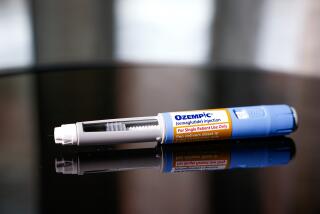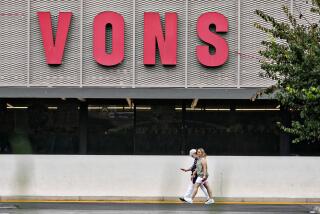Starved for Decent Stores
Rent-by-the-hour motel rooms are easier to find in South Los Angeles than a quart of skim milk. That’s why activists like Karen Bass are working to block the construction of new motels and to bring in grocery stores, or at least get the ones already there to carry healthier food.
“When you walk through the door and can smell the meat counter, that’s problematic,” says Bass, executive director of the nonprofit Community Coalition. For years, she and other coalition members have taken cameras into stores to document wilted vegetables and piles of trash.
Last month, researchers from USC and UCLA and another local advocacy group, Community Health Councils Inc., added numbers to the pictures. Their survey, published in the Journal of General Internal Medicine, compared grocery stores in affluent, mostly white neighborhoods in West Los Angeles with those in low-income, predominantly black neighborhoods in South L.A., Inglewood and North Long Beach.
In West L.A., 80% of the stores carried skim milk, compared with 38% in South L.A., where some didn’t carry milk at all. West L.A. stores stocked, on average, 26 types of fruit and 38 kinds of vegetables, twice the variety found in South L.A. stores. In West L.A., 33% of the stores had a diabetic food section, compared with just 4% in South L.A. stores. Yet African Americans are twice as likely as whites to suffer from diabetes.
In neighborhoods plagued by homicide, quality-of-life issues like food variety can seem less than urgent. But over time, heart disease and diabetes stalk South L.A. as surely as any criminal. A tree-ripened peach or a lean cut of beef can mean the health-care equivalent of a downward tick in crime.
In the years leading up to the 1992 riots, many supermarket chains followed middle-class customers out of the inner city to the suburbs. With a few exceptions, promises to return made after the riots haven’t been fulfilled.
According to the Urban & Environmental Policy Institute at Occidental College, the ratio of major grocery stores to population in South L.A. remains at pre-1992 levels of one for every 42,000 people, compared with one for every 24,000 people in Los Angeles County overall.
In the meantime, South L.A. suffers a glut of cheap motels and liquor stores, despite the Community Coalition’s success at blocking many that burned in the riots from rebuilding. The many middle-class African Americans and others who live in the area want the same variety and choices in shopping that most of Los Angeles enjoys.
Which comes first -- decent hotels or tourist attractions? Health-food stores or diet-conscious consumers? A rise in business investments or a drop in crime rates? Bass and others who live and work in South L.A. aren’t waiting for answers to such chicken-or-egg questions.
Armed with cameras and picket signs, they prod business owners to recognize the pent-up demand for fish and fruit and to learn from successful supermarkets that have opened in Harlem, the Bronx and other once underserved neighborhoods back East. They want their elected representatives to use everything from development incentives to the bully pulpit to bring home the low-fat, nitrate-free turkey bacon.
More to Read
Sign up for Essential California
The most important California stories and recommendations in your inbox every morning.
You may occasionally receive promotional content from the Los Angeles Times.










